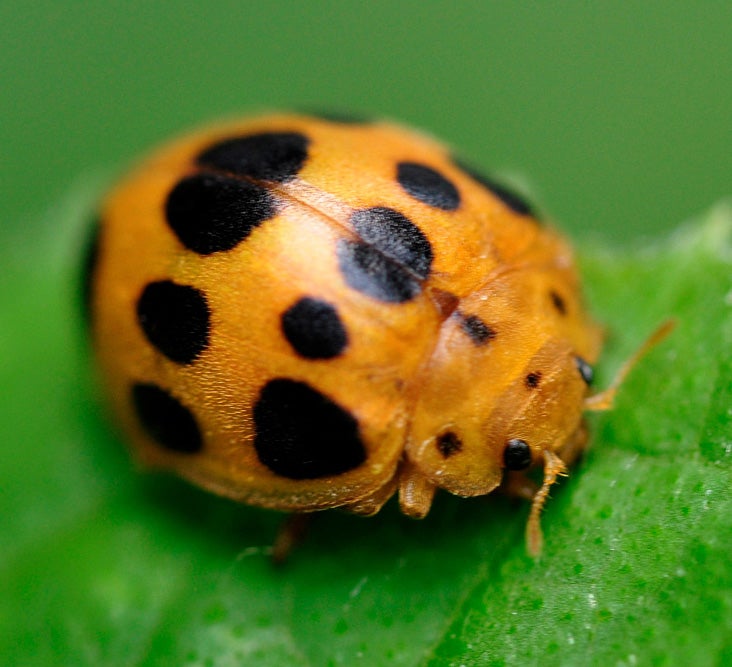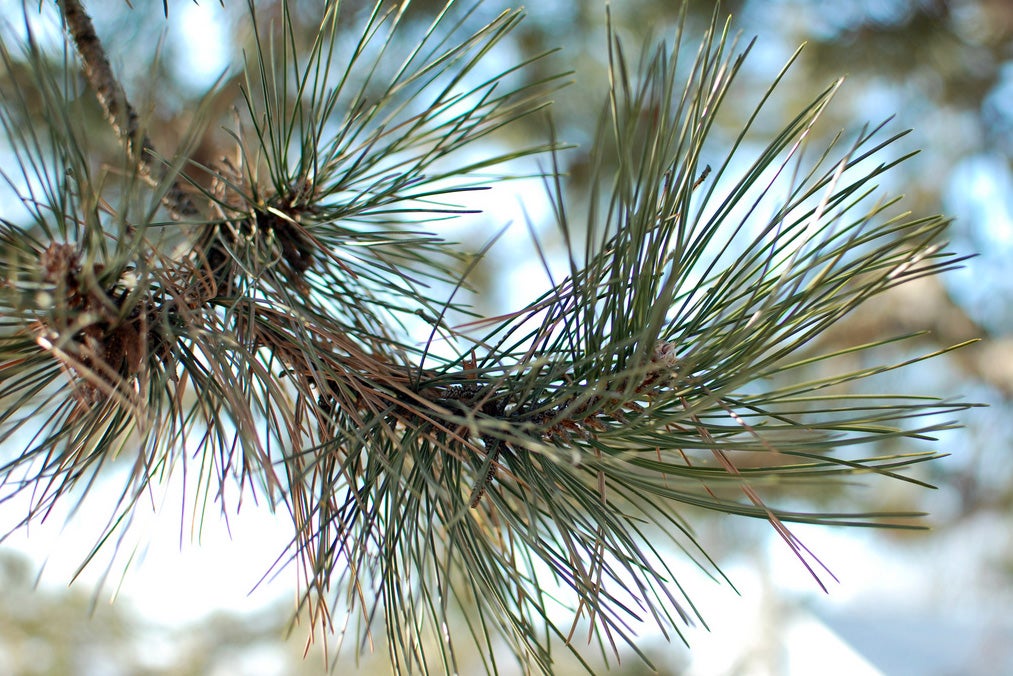The mysterious wild American strawberry
ListenMike McGrath explains why fall is the best time to plant a tree, how to get your fig tree to produce more fruit, how to rid your garden of Mexican bean beetles, why ivy needs to be cleared from your tree trunks, the best way to cure a gourd, and the mysteries of the wild American strawberry.
Question of the Week
A couple of weeks ago, our Public Radio show, “You Bet Your Garden” got a very sweet phone call from a guy named Jeremiah in Tennessee. He explained that he’s now blind, but back when he was sighted, he stumbled onto a beautiful plant growing in the woods. He said that he researched it and thinks it might have been something he called a “wild American strawberry bush”, but wasn’t sure. He called it “the most amazing plant”, and wanted to know where he could buy one and how to grow it.
Read more about wild American strawberry »
-

Photo by Flickr user dirk huijssoon
Highlights from show for September 27, 2014:
Transplanting an oak sapling
Sean from Hubert, North Carolina received a potted oak tree sapling and after caring for it indoors for a year, now wants to transplant outside. He’s concerned about the salty, sandy soil in his yard and asks Mike for help. Mike says: “The great news is that this is the perfect time of year to plant a tree. The survival rate for trees that are planted in the fall, especially the early fall, is much higher than plants that go in in the spring, especially in a climate like yours where summer can suddenly warm up and get really torrid. Your tree will have the winter to go dormant, which its been trying to do — this poor thing is sleep deprived! — and then when it wakes up it’ll have some good root growth established and it’ll do some more root growth before summer comes a calling.” Mike goes on to explain that when planting, Sean should dig a wide, shallow hole and place the tree high enough in the ground so that the point in the trunk where the roots begin to flare out is exposed. Planting the tree high in the ground and leaving this musculature of the plant exposed ensures a strong, steady tree in the future. Mike also advises Sean to add compost to his sandy soil for a nutritional boost.
What to about a healthy fig tree with no figs
Eileen Green Creek, New Jersey has a healthy fig tree that isn’t producing figs. She has the Mike assures her that this is a very common problem. “You have a very common problem. Now, this fig tree is in a very exposed area that you’ve identified. What happens with fig trees is typically over the winter, even in a non-culling winter, they will suffer some amount of die-back. And then in the spring, depending on how much old growth they have and new growth, that’s going to decide for you how many figs you get. The smart money would go back in time and plant your fig closer to the house. Believe it or not, being closer to the structure in a somewhat protected area — especially with ocean winds, the winds down there when they pick up can be enormous — closer to the house, you’d probably be eating figs right now as we’re talking.” Mike advises that if the tree is going to stay where it is, Eileen should take extra steps to protect it through the winter. Staking the tree and loosely covering with burlap will protect against winter damage during the upcoming season, and a healthy pruning the following spring will promote healthy growth, and hopefully, some figs.
-

Photo by Flickr user cewoldt
That’s not a ladybug
Tara Reading, Pennsylvania has started her first garden and is looking for an organic solution for what she thinks are ladybugs snacking on her string beans. Mike corrects her and explains that she has a different pest on her hands: “Well, you don’t have ladybugs. There are two creatures who look like ladybugs a little bit but are destructive, and you have what’s known as the Mexican bean beetle. And of course, ladybugs only eat aphids and other insect prey. So you would never mistake a true ladybug for a Mexican bean beetle. Although, I would tell you that the adults look remarkably similar — they are both true beetles, you know, they’ve got the spots and everything.” After assessing her gardening set-up, Mike finds that a few simple mistakes have probably created a stressful situation for her plants, causing them to be more vulnerable to pests like the Mexican bean beetle. He recommends making moves to set up a healthier garden next year: building raised beds, filling them with locally sourced mushroom soil and start string beans from seed rather than from seedling plants. If the Mexican bean beetles make another appearance, Mike advises spraying the plants with sharp streams of water first thing in the morning. And then “And then put some bird baths in the soil — just the saucers of the bird baths — and get toads to come into your garden. Toads are the greatest controller of Mexican bean beetles and the Colorado potato beetle, which is the other pest that looks like a ladybug.”
-

Mexican bean beetle, photo by J. Michael Raby
“Put some bird baths in the soil — just the saucers of the bird baths — and get toads to come into your garden. Toads are the greatest controller of Mexican bean beetles and the Colorado potato beetle, which is the other pest that looks like a ladybug.”
Mike McGrath
Keep ivy away from your tree trunks
Mario from Audoboun, New Jersey has a large white pine that’s fairly healthy, save for the clumps of brown needles that have been appearing on the tree. He explains that the tree is 30 feet tall with a little ivy growing near the base of the tree. Mike stops him there and says: “Has it occurred to you that the ivy is a bad idea? It should not be anywhere near where it can reach the trunk. If your white pine is 30 feet tall, it has an extensive root system that goes out — in many cases — as far underground as the furthest branch goes out upstairs. And ivy is a tremendous competitor for food and water. And when it gets on the trunk, it gets the trunk damp. So really there should be at least a foot of open space all around the trunk.” Mike explains that while all evergreens lose their needles continuously, white pines can be “drama queens” and lose piles of needles at once. To keep his tree healthy, Mike advises Mario to clear any ivy that’s near the trunk of the tree, feed his lawn organically in the fall and see if the tree improves in the spring, explaining “White pines can do darn good roll over dead impression and be perfectly healthy.”
-

Photo by Flickr user Michael W. May
Curing gourds
Kyle from Mertztown, Pennsylvania has thirty mature bottleneck gourds in her garden and doesn’t know how to cure them for an alternate use. Mike says: “You know, before we had metal implements and when glassware was really expensive and ceramic was really expensive, these gourds were used for the storage of liquids, made into ladles, carved into birdhouses.” Mike explains that since she has all the gourds she needs, she should clip any new flowers that are appearing on the plant. This will allow the plant to concentrate its remaining energy on maturing the gourds that Kyle wants to pick. To know when to pick the gourds, Mike says to knock on the oldest, largest gourds and listen for a hollow sound, and shake them gently to see if she can hear any seeds rattling around. If the gourd has hollowed and sounds like it has loose seeds it’s is ready to pick and bring inside for curing. If the seeds aren’t rattling around, leave the gourd outside to mature on the vine longer. Cure the gourds indoors in a cool dry place until they are totally solid before carving.
-

Photo by Flickr user trustyone
WHYY is your source for fact-based, in-depth journalism and information. As a nonprofit organization, we rely on financial support from readers like you. Please give today.

